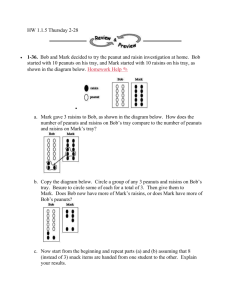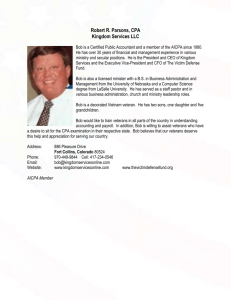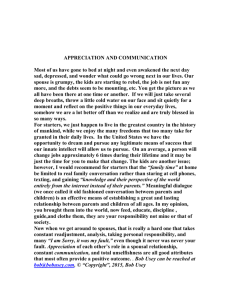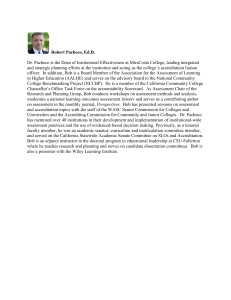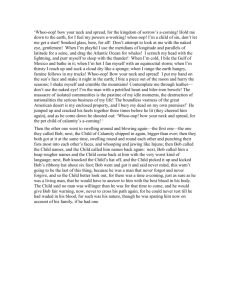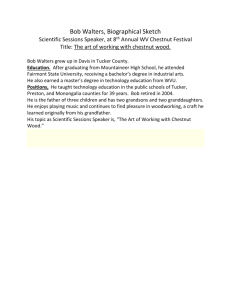HW 1.1.5 Help
advertisement
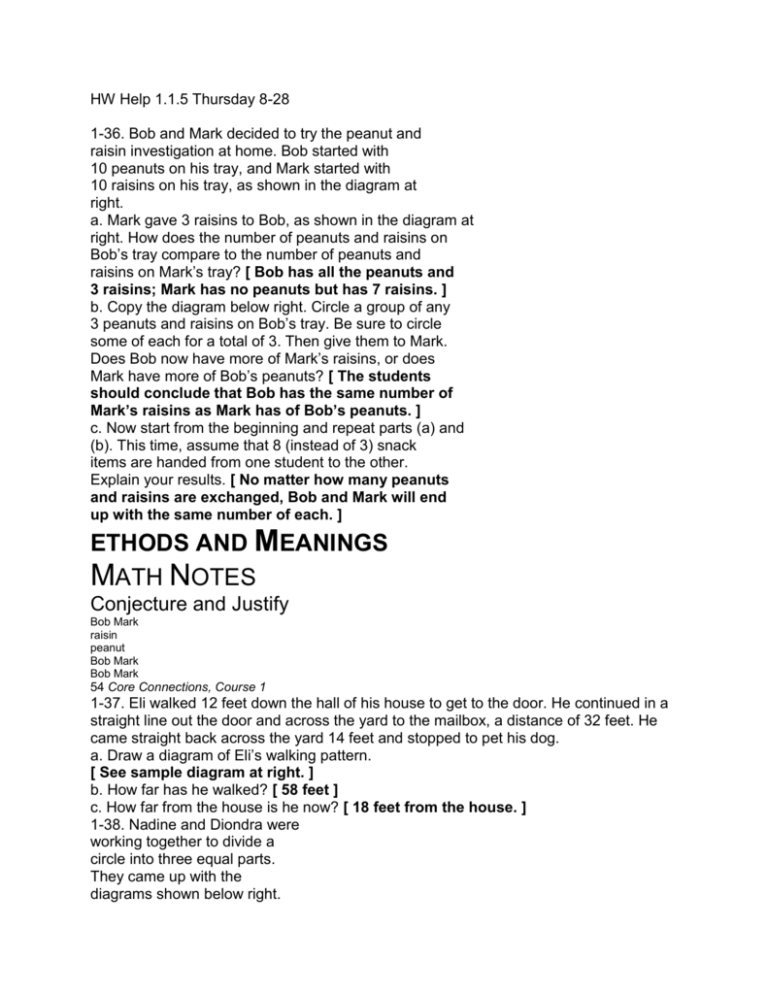
HW Help 1.1.5 Thursday 8-28 1-36. Bob and Mark decided to try the peanut and raisin investigation at home. Bob started with 10 peanuts on his tray, and Mark started with 10 raisins on his tray, as shown in the diagram at right. a. Mark gave 3 raisins to Bob, as shown in the diagram at right. How does the number of peanuts and raisins on Bob’s tray compare to the number of peanuts and raisins on Mark’s tray? [ Bob has all the peanuts and 3 raisins; Mark has no peanuts but has 7 raisins. ] b. Copy the diagram below right. Circle a group of any 3 peanuts and raisins on Bob’s tray. Be sure to circle some of each for a total of 3. Then give them to Mark. Does Bob now have more of Mark’s raisins, or does Mark have more of Bob’s peanuts? [ The students should conclude that Bob has the same number of Mark’s raisins as Mark has of Bob’s peanuts. ] c. Now start from the beginning and repeat parts (a) and (b). This time, assume that 8 (instead of 3) snack items are handed from one student to the other. Explain your results. [ No matter how many peanuts and raisins are exchanged, Bob and Mark will end up with the same number of each. ] ETHODS AND MEANINGS MATH NOTES Conjecture and Justify Bob Mark raisin peanut Bob Mark Bob Mark 54 Core Connections, Course 1 1-37. Eli walked 12 feet down the hall of his house to get to the door. He continued in a straight line out the door and across the yard to the mailbox, a distance of 32 feet. He came straight back across the yard 14 feet and stopped to pet his dog. a. Draw a diagram of Eli’s walking pattern. [ See sample diagram at right. ] b. How far has he walked? [ 58 feet ] c. How far from the house is he now? [ 18 feet from the house. ] 1-38. Nadine and Diondra were working together to divide a circle into three equal parts. They came up with the diagrams shown below right. Tanisha said, “One of these pictures is wrong.” What do you think? Is one picture incorrect? If so, which one? Why? [ The picture on the right is incorrect. The three parts are not equal. ] 1-39. Find a pattern in each number sequence below. Then use your pattern to generate the next five numbers in the sequence. Explain the pattern. a. 2, 5, 3, 6, 4, ___, ___, ___, ___, ___ [ 7, 5, 8, 6, 9; every other number is a consecutive counting number ] b. 100, 99, 97, 94, 90, ___, ___, ___, ___, ___ [ 85, 79, 72, 64, 55; subtract consecutive counting numbers from the previous term ] 1-40. Round each number to the specified place. a. 33.54296 b. 307,407 c. 285.39154 d. 6811.09 (ten thousandth) (thousand) (hundredth) (ten) [ 33.5430 ] [ 307,000 ] [ 285.39 ] [ 6810 ]
